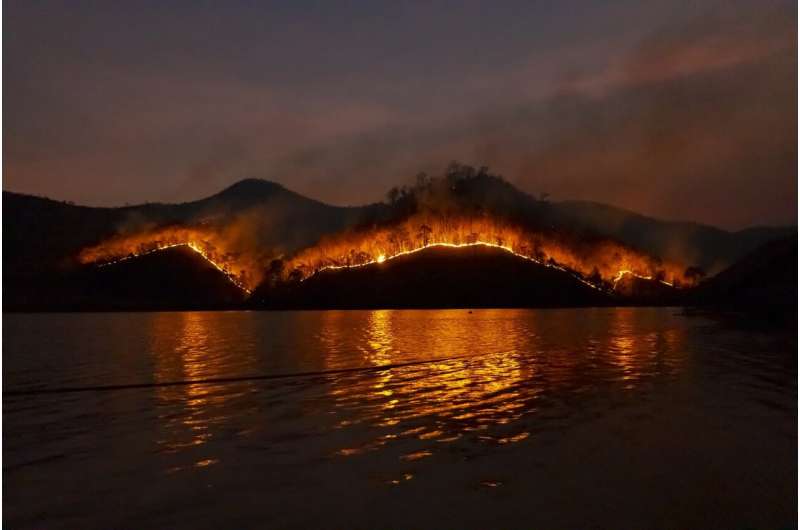This article has been reviewed according to Science X's editorial process and policies. Editors have highlighted the following attributes while ensuring the content's credibility:
fact-checked
peer-reviewed publication
trusted source
proofread
Canadian wildfire smoke exposure was not much worse than a bad pollen day in New York City, says study

New Yorkers can apparently breathe a sigh of relief, at least for now. Their exposure to the smoke in June 2023 from Canadian wildfires led to only a slightly higher bump in visits to New York City hospital emergency departments for breathing problems or asthma attacks than what is seen on days when pollen counts are high. However, authors of a new study say other possible health effects, such as possible heart attacks and stroke, still need to be investigated.
For the study, researchers at NYU Grossman School of Medicine analyzed daily levels of air pollution, as measured by the presence of tiny particles known as particulate matter 2.5, which can if lodged deep in the lungs lead to inflammation, as well as respiratory and heart problems.
When researchers assessed air pollution levels for the first six months of 2023, including months of regular ambient (or general background) air pollution and the days in June when wildfire smoke peaked, they found that wildfire smoke led to a 3% average increase in asthma-related visits to emergency departments across all city hospitals (for every 10 microgram increase in PM 2.5 per cubic meter of air).
When wildfire smoke was at its worst on June 7, 2023 (at a PM 2.5 of 146 micrograms per cubic meter of air), citywide asthma-related emergency visits peaked at 335, up from a daily average of 188 per day earlier in the year, when the skies were clear of wildfire smoke.
By comparison, they say this peak wildfire number is only slightly higher than the 302 asthma-related emergencies seen on April 26, 2023, when the level of tree pollen, another lung irritant and known asthma trigger, was high (at tree pollen counts above 1,500 per cubic meter of air).
The researchers caution that while no deaths tied to the wildfire smoke were reported in June, asthma remains a serious and potentially life-threatening lung disease.
"Thankfully, the respiratory effects of the wildfire smoke in June were not much worse than what had been seen on really bad pollen days back in the spring, and despite what many New Yorkers may have feared on seeing hazy, orange air," said study co-investigator Wuyue Yu, a doctoral student at NYU Langone Health.
Yu says the latest findings, published in the American Journal of Respiratory and Critical Care Medicine online Aug. 15, mirror those seen with increases in ambient air pollution and pollen seen elsewhere, and their effects on asthma-related hospital emergencies.
"Still, the long-term consequences, if any, of exposure to wildfire smoke remain unknown, so we are not yet totally in the clear," said study co-investigator David Luglio, a doctoral student at NYU Langone Health.
Researchers say they already have study plans for further air monitoring and for comparing the health effects of exposure to wildfire smoke to particulate matter more commonly inhaled from fossil-fuel combustion, which he says is more dangerous.
"While inhaling any particle-filled air is not good for your lungs, we do know that wildfire smoke is primarily made up of organic matter," said senior study investigator George Thurston, ScD, a professor in the Departments of Medicine and Population Health at NYU Langone. "As a result, it is not enriched in the toxic metals that are found in fossil-fuel emissions, which are known to cause damaging oxidative stress in the body."
Indeed, Thurston says this was reflected in other study results, which showed that the wildfire smoke contained 64% more potassium than ambient air pollution, with potassium a key component to soil and foliage. By contrast, the wildfire smoke contained just 12% of the average levels of copper present in background air pollution and 26% of the average levels of sulfur observed in the ambient air. Both are found in average New York City air and are known causes of oxidative stress when inhaled.
More information: George Thurston et al, An Evaluation of the Asthma Impact of the June, 2023 New York City Wildfire Air Pollution Episode, American Journal of Respiratory and Critical Care Medicine (2023). DOI: 10.1164/rccm.202306-1073LE




















